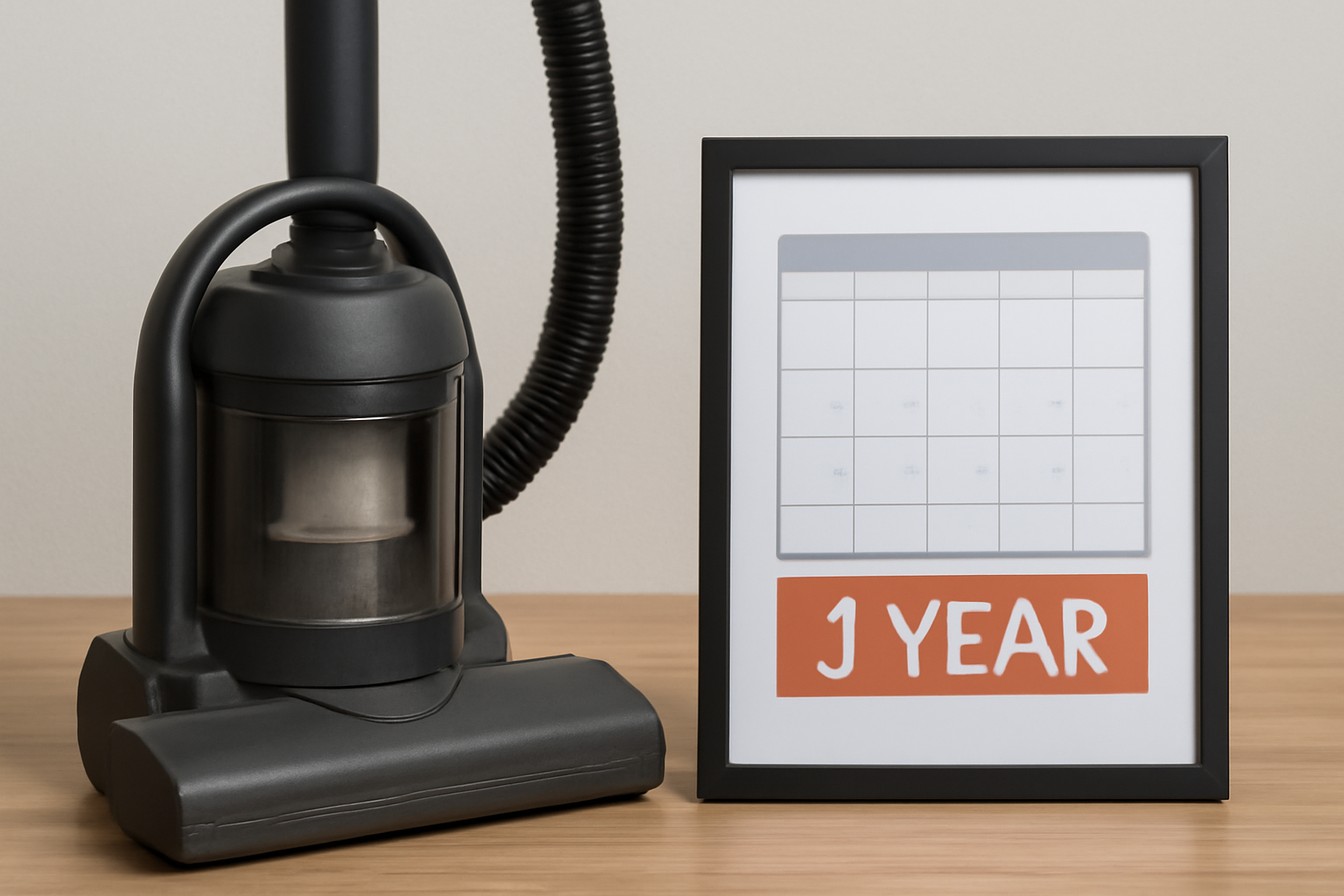
In the European vacuum cleaner market, durability is more than a feature—it’s a survival test. Many distributors and buyers have experienced it: a product that looks premium at first, but within months, motors fail, hoses crack, and filters clog permanently.
This guide helps importers, distributors, and engineers identify what separates long-lasting vacuums from disposable ones. If you’re involved in vacuums procurement or vacuum cleaner distribution, these insights can save you time, warranty costs, and brand reputation.
🧱 1. The “One-Year Failure” Problem
The European vacuum sector is flooded with models built for low cost rather than longevity. The result? Short life cycles, poor reviews, and wasted investment.
The “one-year failure” syndrome often comes from:
Cheap materials or thin plastic housings
Overstressed motors with no heat control
Low-quality filters causing airflow restriction
Inconsistent production standards across batches
Durability doesn’t happen by accident—it’s engineered.
⚙️ 2. Key Factors That Determine Vacuum Durability
a. Motor Quality
The heart of every vacuum is its motor. Look for:
Copper-wire motors instead of aluminum alternatives
Brushless DC systems for longer operational lifespan
Thermal protection that cuts power during overheating
Vibration control designs reducing internal stress
b. Filtration and Airflow Design
Poor filtration kills vacuums early. Filters that clog easily cause the motor to overheat and strain.
Choose models with multi-stage cyclonic filtration and washable HEPA filters.
c. Build Materials
Thin polypropylene housings and weak seals often fail under daily use. Instead, opt for:
ABS or PC+ABS composites (impact resistant)
Stainless steel for commercial tank models
Reinforced hose joints tested for >5,000 flex cycles
Durability begins with engineering, not price tags.
🔋 3. Battery and Electronics Longevity (for Cordless Models)
Wireless vacuums are convenient, but often short-lived due to battery degradation.
For reliable performance, Cordless Handheld Vacuum Cleaner models should feature:
Certified lithium-ion cells (Samsung, LG, Panasonic)
Built-in BMS (Battery Management System)
Separate charging modules with temperature sensors
Replaceable battery packs for commercial customers
Always request discharge curve charts from the manufacturer—real data reveals long-term consistency.
🧩 4. Structural Design: What Engineers Know but Marketers Ignore
Design flaws are the silent killers of product lifespan.
For example, thin walls in air ducts cause vibration cracks, and tight motor housings trap heat.
Engineering Must-Haves:
Double-sealed dust compartments to prevent leaks
Overheat vents to maintain airflow
Reinforced handles for stress distribution
Screw-fixed components instead of snap-fit plastics
In product audits, always dismantle one sample to inspect internal joints and fasteners.
A durable Portable Self-Cleaning Vacuum Cleaner usually demonstrates thoughtful internal layout and part modularity.
🧪 5. Quality Testing: The Real Proof of Reliability
Durability isn’t a promise—it’s tested. Reliable factories use strict inspection and aging tests before shipment.
Key Tests Importers Should Request:
| Test Type | Purpose | Ideal Standard |
|---|---|---|
| Suction Endurance | Tests airflow after 100 hours of use | <5% power drop |
| Hose Flex Test | Simulates bending during daily use | 5,000 cycles |
| Heat Aging | Runs motor continuously to detect stress | 60°C for 48h |
| Drop Test | Evaluates structural strength | 1.2m free fall |
| Noise Test | Measures mechanical stability | ≤78 dB |
When sourcing Wet and Dry Vacuum Cleaner models, request detailed test reports with timestamps and photos.
🏭 6. Supply Chain and Manufacturing Consistency
Even a good design fails without consistent production. Many factories produce strong samples but lower-grade bulk orders.
How to Verify Supplier Reliability:
Audit raw material suppliers for plastic, motor, and battery quality.
Check in-house QA procedures (ISO9001, IATF16949 compliance).
Compare three different production batches before contract signing.
Require serialized production tracking for defect analysis.
In the long term, consistent suppliers reduce return rates and ensure brand trust.
🧭 7. How to Choose a Reliable Manufacturer
A good factory doesn’t just build vacuums—it builds trust.
Here’s what to look for when selecting partners for Portable Vacuum for Travel or household series:
Transparency: Provides test reports, certifications, and production videos.
Traceability: Uses batch tracking for all key components.
Service Support: Offers spare parts for at least three years.
R&D Collaboration: Co-develops improvements based on importer feedback.
Distributors that prioritize long-term reliability will naturally dominate market share, because end-users remember brands that last.
💡 8. Durability Equals Sustainability
A vacuum that lasts longer is not just cost-effective—it’s eco-friendly.
In the EU, new environmental policies encourage “Right to Repair” principles. Importers sourcing durable models can position their brand as sustainable and responsible.
Durable vacuums minimize waste, lower lifetime carbon footprints, and create stronger brand stories.
In 2025’s European market, sustainability and reliability will be synonymous with success.
🚀 Conclusion: Buy Once, Build Trust
A vacuum that doesn’t break in a year isn’t luck—it’s smart procurement.
By combining material science, consistent testing, and transparent supplier evaluation, importers can protect their reputation and profitability.
Whether you’re sourcing a Portable Self-Cleaning Vacuum Cleaner for home users or a Wet and Dry Vacuum Cleaner for commercial markets, longevity should be your top priority.
Because in today’s competitive landscape, durability equals brand value.
📌 Hashtags (Lanxstar Related 50 Tags)
Lanxstar, VacuumCleaner, SmartVacuum, CordlessVacuum, WetDryVacuum, PortableVacuum, SelfCleaningVacuum, EnergyEfficientVacuum, HEPAVacuum, VacuumTechnology, VacuumParts, SuctionPower, AirflowDesign, CycloneSystem, DustCollector, NoiseControl, EcoFriendlyVacuum, EUStandards, CECertified, VacuumMotor, Procurement, Distribution, B2BVacuum, OEMVacuum, ODMVacuum, CommercialVacuum, HouseholdVacuum, IndustrialVacuum, VacuumInnovation, SmartCleaning, VacuumEngineering, BatteryTechnology, DustSeparation, FiltrationSystem, PortableCleaner, VacuumAccessories, HomeAppliance, ApplianceSupplier, VacuumManufacturing, VacuumTesting, QualityControl, LanxstarBrand, VacuumExport, VacuumImport, EUImporter, VacuumSupplier, VacuumMarket, VacuumSales, VacuumDesign, SustainableCleaning, ProfessionalVacuum, EuropeanVacuumIndustry
















